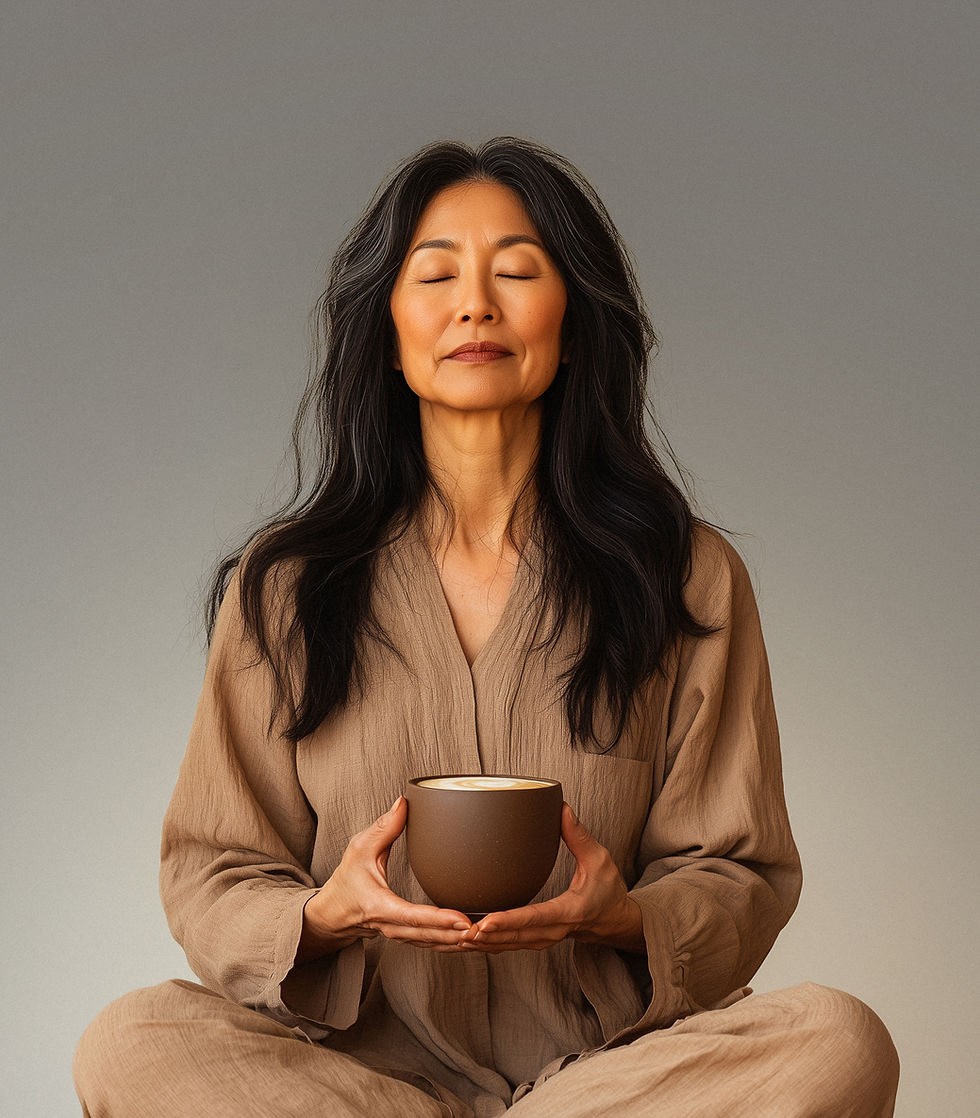When Calm Feels Uncomfortable: Understanding Body Dysregulation and the Path Back to Balance (Part 1)
- Vanessa Greenwald
- Oct 13
- 3 min read
Breathe...
Have you ever noticed that even when everything seems “fine,” your body still feels on edge?
This has happened to me more times than I can count. I could be having a “great day,” and yet I catch myself holding my breath, my chest tight, my shoulders creeping toward my ears. When I become aware of this, I pause and ask myself, “What’s going on, Vanessa?” Sometimes I know the answer. Other times, I have to take a few slow, deliberate breaths before the truth surfaces.
Maybe you’ve felt it too—the tight chest for no reason, the restless scrolling late at night when you should be sleeping, the racing thoughts even in quiet moments. Perhaps your body speaks through tension headaches, a sensitive stomach, or that undercurrent of unease that never fully lets up.
This is what body dysregulation can look like— and it’s far more common than most of us realize.
What Does Body Dysregulation Feel Like?
Body dysregulation happens when our nervous system gets “stuck” in survival mode and, because it becomes familiar, you might not even realize it’s happening.
Here are a few subtle (and not-so-subtle) signs:
Feeling easily overwhelmed by small things
Trouble relaxing, even in safe or peaceful moments
Holding your breath without noticing
Digestive discomfort, tension headaches, or muscle tightness
Emotional swings—numb one moment, flooded the next
Feeling detached from your body or emotions (“I know I’m safe, but I don’t feel safe.”)
This isn't a weakness. It’s your body’s intelligent protection mechanism, the defense—doing what it learned to do when safety wasn’t guaranteed. However, what once kept you alive might now be keeping you from feeling fully alive.

When “Calm” Feels Unsafe
When you’ve lived in a state of chronic stress or hypervigilance, calm can actually feel uncomfortable—even threatening.
I know how strange that sounds, but I lived it. I grew up in environments where safety wasn’t a given—it was something I had to earn. My nervous system learned that being on guard was necessary for survival; my survival.
Without realizing it, I trained my body and brain to believe that stillness was dangerous. That if I let my guard down, something bad would happen.
This is how it happens for many of us. We experience something threatening. Our body responds. Our mind interprets. Together, they form an emotional imprint that gets stored deep within. Then, when something in the present moment feels similar—even if it’s safe—our body reacts as if the danger is still there.
Over time, these repeated patterns become our “normal.”So when we finally try to slow down—through meditation, breathwork, or simply resting—our system panics. Stillness feels unsafe. Calm feels like a loss of control.
But you’re not doing anything wrong. Your body is simply adjusting to a new way of being—a new rhythm it doesn’t yet recognize as safe.
Think of it like moving from a noisy city to a quiet forest. At first, the silence feels eerie, scary, even uncomfortable. That was my experience when I moved out of the city to the suburbs. But, over time, you begin to notice the subtler sounds—the wind in the trees, the rhythm of your breath. Slowly, your body begins to trust the quiet.
That’s the journey—teaching your nervous system that safety doesn’t have to be earned, and that calm can be your new home.
How Do I Begin Noticing Dysregulation In My Body?
Awareness is the first step toward healing—but it’s often the hardest.
I’ve heard every version of resistance—because I’ve said them all myself:
“I’m too busy to pause.”
“I’ll deal with it later.”
“I don’t even know where to start.”
But here’s the truth: you can’t change what you’re unwilling to notice. You are worth the effort it takes to come home to yourself.
Try this gentle practice:
Pause and notice. What sensations do you feel in your body right now?
Name your state. Am I feeling calm, anxious, frozen, or numb?
Notice patterns. When do I feel most tense? What helps me soften, even slightly?
You don’t need to fix or force anything. Simply notice.
This simple act of awareness begins to rebuild the bridge between you and your body—one small moment at a time.
And if you can, record what you notice. Write it in your journal, jot it in your notes app, or speak it into a voice memo. Over time, you’ll begin to see the patterns—the subtle ways your emotions, thoughts, and body sensations work together.
Coming up next...
In Part 2, we will explore what healing dysregulation really looks like—from learning how to regulate your nervous system, to finding calm that feels safe, not scary. The path back to balance isn’t about forcing yourself to be calm—it’s about remembering that
your body already knows how!
Stay tuned… your calm is not gone. It’s just waiting to be rediscovered.



Comments